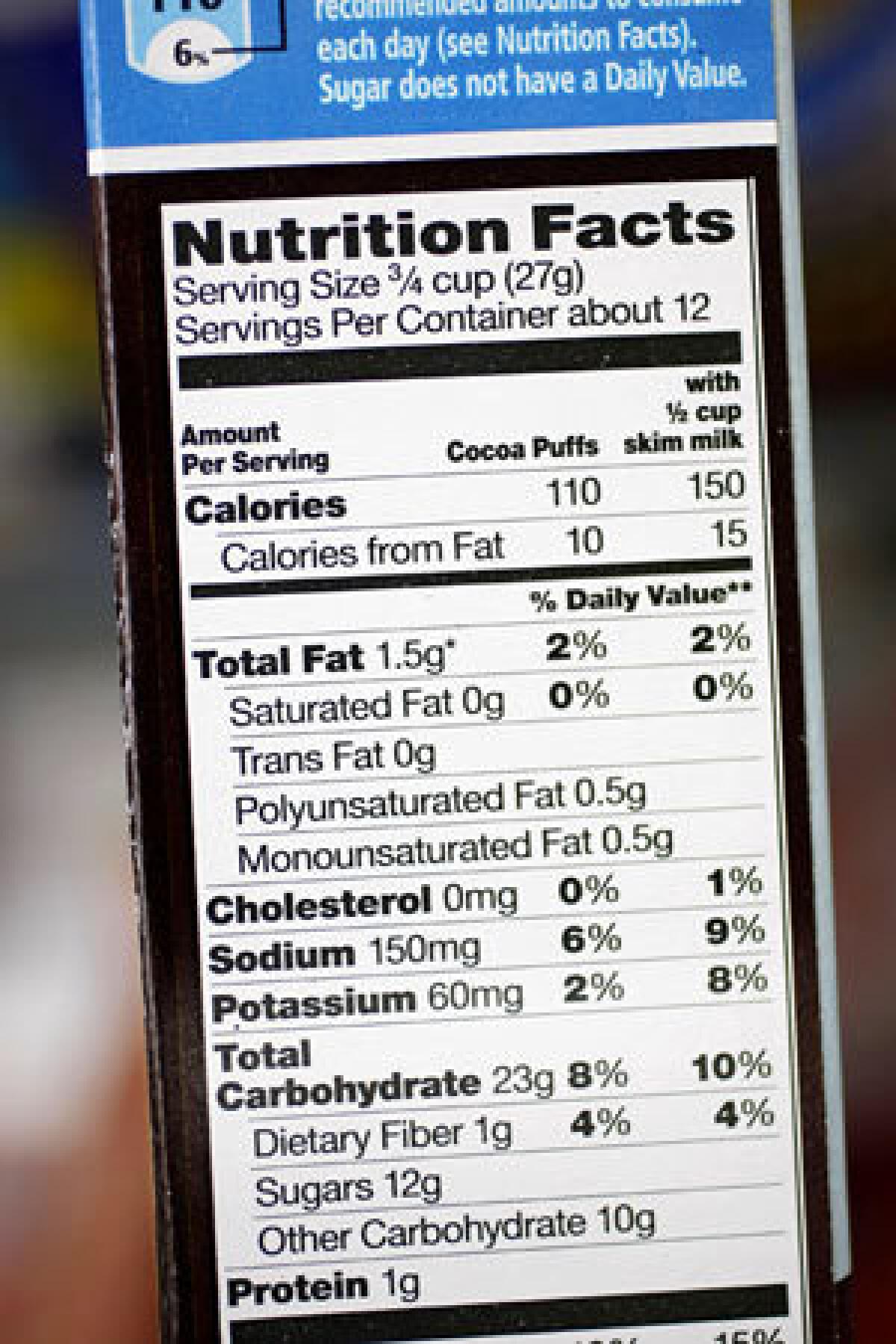The power of the calorie count

Registered dietitian Jill Weisenberger once had a client who kept a puzzling food journal. The calorie counts were all out of whack. The woman’s tuna sandwich had 33 calories. An apple: 144.
Turns out the woman was mistaking a food-calorie book’s index for a calorie chart.
It’s not too far-fetched, seeing as few common health words are as baffling to us as “calorie.” Calories are invisible, yet we try to count them and cut them. Food supplies them, but they’re not nutrients.
“They’re abstract,” said Marion Nestle, a professor of nutrition at New York University, pointing out that calories are “a mess” to explain. “Ordinary mortals cannot count, see, taste, smell or feel a calorie.”
As a result, we’re bizarrely wedded to a concept we know very little about. Calories are the first thing people look for on the Nutrition Facts panel of foods and beverages, according to a survey by the International Food Information Council and Foundation. But just 15% of Americans can accurately estimate the number of calories they should be consuming. And less than one-third of us correctly say that “calories in general are most likely to cause weight gain.”
“I frequently discourage calorie counting because it can be tedious and ruin the joy of eating,” said Weisenberger, a food and nutrition consultant based in Virginia. “But I still want my patients to understand the concept so they can compare different food choices.”
Those who can’t grasp that concept should focus instead on food choices and portions. “But weight loss won’t happen without calorie reduction,” she said.
Most of us simply want to know how many calories we need. But to truly grasp how calories can help you reach and maintain a healthy weight, it helps to know the basics.
Are some calories more fattening than others?
Not any more than the dollar in your right pocket will buy you more than the dollar in your left pocket. Some foods are more jam-packed with calories than others. For about 220 calories, you can eat a cup of pasta, or you can eat about 4 cups of broccoli or you can munch on about 1/4 cup of nuts. They’re all about the same calories, but the 4 cups of broccoli will tame your hunger more.
How many calories do I need?
The best way is to look at your weight. If you’re gaining weight (and don’t want to), you’re eating too many calories. You can also get an estimate at mypyramid.gov.
How can I cut calories without starving or hating what I eat?
If you like vegetables, there’s no reason to be hungry. They’re relatively low in calories but are also filling because of their fiber and water content. Eat a couple of cups of them at dinner. It’s a lot easier to decrease your potatoes and steak when you’ve got broccoli or zucchini or both to fill you up.
Also, try cooking at home. If takeout is your norm, commit to cooking just once or twice each week. And allow indulgences. There’s no reason to give up your favorite foods. Eat smaller portions or eat them less often.



